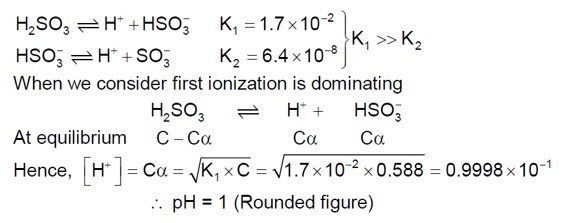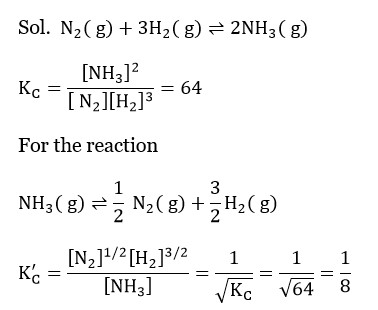Equilibrium
Get insights from 242 questions on Equilibrium, answered by students, alumni, and experts. You may also ask and answer any question you like about Equilibrium
Follow Ask QuestionQuestions
Discussions
Active Users
Followers
New answer posted
2 months agoContributor-Level 10
Moles of HCl = (50 / 1000) * 0.5 = 0.025 moles
So, moles of CaCO? used = 0.025 / 2 = 0.0125 moles = 1.25 g
95% (Total mass of CaCO? ) = 1.25 g
Total mass of CaCO? = 1.25 / 0.95 = 1.32 g
New answer posted
2 months agoContributor-Level 10
pH = pK? + log ( [CH? COONa] / [CH? COOH])
pH = 4.57 + log (0.1 / 0.01) = 5.57
New answer posted
2 months agoContributor-Level 10
Sucralose: Artificial sweetener
Glyceryl ester of stearic acid: The document incorrectly identifies this as "Sodium stearate which is synthetic detergent". Sodium stearate is a soap, not a synthetic detergent.
Sodium benzoate: Food preservative
Bithionol: Antiseptic
New answer posted
2 months agoContributor-Level 10
For the coagulation of a negative sol, the species Ba²? has the highest flocculating power (referring to the Hardy-Schulze rule, where higher charge leads to greater coagulation power).
New answer posted
2 months agoContributor-Level 10
For the weak acid HA in the presence of strong acid HCl:
Ka = [ (Cα + 0.1) * Cα] / [C (1-α)] ≈ (0.1 * 10? ²α) / 10? ² = 0.1α
Given Ka = 2 * 10?
2 * 10? = 10? ¹ * α
α = 2 * 10?
Ans = 2
New answer posted
2 months agoContributor-Level 10
In endothermic reaction formation of reactants is favoured upon decrease in temperature. Addition of inert gas at constant volume and temperature has no effect on equilibrium.
Taking an Exam? Selecting a College?
Get authentic answers from experts, students and alumni that you won't find anywhere else
Sign Up on ShikshaOn Shiksha, get access to
- 65k Colleges
- 1.2k Exams
- 679k Reviews
- 1800k Answers



